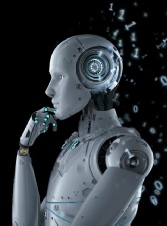



 NEXT
NEXT
 BACK
BACK
 Forum
Forum


Philosophical musings on Quanta & Qualia; Materialism & Spiritualism; Science & Religion; Pragmatism & Idealism, etc.




Post 107. March 08, 2020 continued . . .
The God Problem
Patterns Without Meaning
Now 2500 years later, Claude Shannon has again updated the notion of Platonic Forms in his theory of Information, in which he separated Meaning from Number Relationship. His axiomatic ratio is 1/0, something or nothing. This abstraction had enormous practical value in the emergence of “thinking” machines (computers), but eventually became an impediment in the development of Artificial Intelligence. Human intelligence is all about meaning, but strings of 1s and 0s must be interpreted from abstract values to personal values in order to be meaningful. Ironically, one application of the all or nothing ratio, has been found to be a necessary step toward meaning in Nature : cycles and waves. Babylonian astrologers observed what Bloom calls “zig-
In the era of Greek philosopher Pythagoras, pragmatic methods of land measurement had been developed into a doctrine of theoretical Geometry. With this new-
Bloom is developing the idea that “deep structures underlie the cosmos”. So, he introduces Aristotle’s version of Plato’s Ideal Forms : “Archetypes5 are perfect forms. Perfect forms of which real things are mere imitations.” Then, he recounts the allegory of the Cave of Illusions. It portrays the perceived world as “a pale shadow. A pale shadow of what? Of a far more real world. A perfect world. An eternal world.” This ancient worldview has been updated by Don Hoffman in his book : The Case Against Reality6, which uses the icons on a computer screen to illustrate that we interact with superficial appearances instead of fundamental reality. In accordance with the theory of evolution, he says that what we take for True Reality is an interface with Fundamental Ideality. Bloom may not be aware of this novel metaphor of ideal Forms, but his own cosmology is essentially a modern reformulation of ancient Idealism, with Axioms in place of Forms.
Post 107 continued . . . click Next
Intelligence
from
Mechanism?
Occult vs Overt Reality
The invisible realm of Numbers envisioned by Pythagoras was mystical & magical & supernatural. But, the Occult (hidden) Reality of Spiritualism may be related to the Overt Reality of Science in a mundane manner similar to that of Consciousness and Sub-
We are directly aware of primary conscious thought, but only know the sub-
So, I’m sure that Bloom imagines his “hidden state” as purely natural, but merely beyond the limitations of our perception. Numbers and Ratios and Axioms are like the foundation (deep structures) of your house, unseen but upholding the super-
3. Hegelian History :
A back & forth dialectic pattern that oscillates between extremes of political polarization. The dominant opinion (thesis) at one time is soon opposed by a different view (Anti-
4. Hidden Reality :
Bloom doesn’t develop this idea of an abstract realm of Numbers & Forms, so I assume he accepts the ancient theories, even though they lend credence to spiritual beliefs. See “Occult” sidebar.
5. Archetypes :
Greek – first mold, original form. Equivalent to Plato’s Forms.
6. Case Against Reality :
See blog post 105.
http://bothandblog6.enformationism.info/page21.html

The God Problem
How a Godless Cosmos Creates
Howard Bloom
Psychology; Sociology; Political Science
